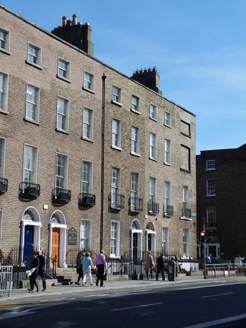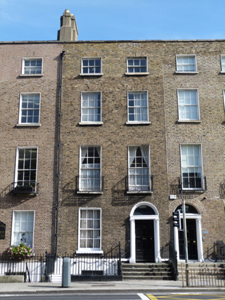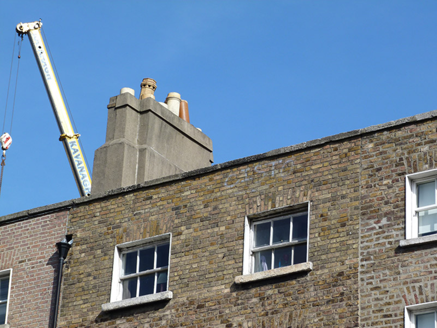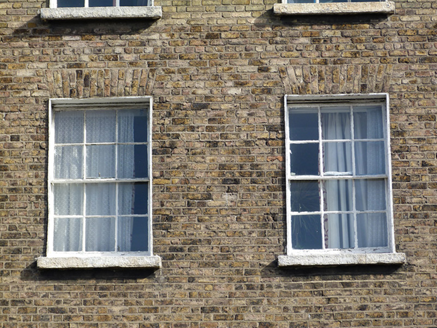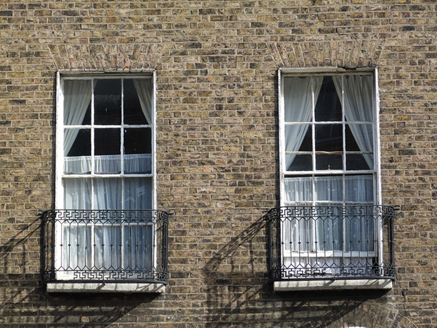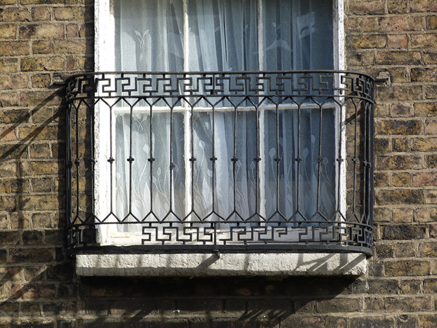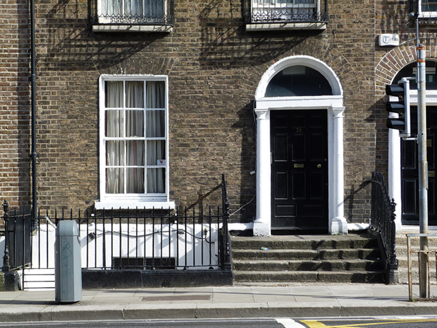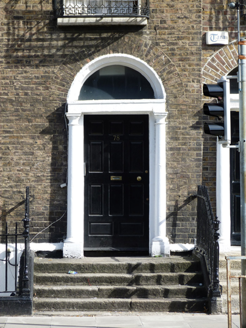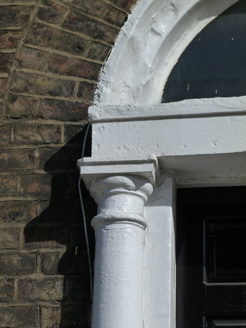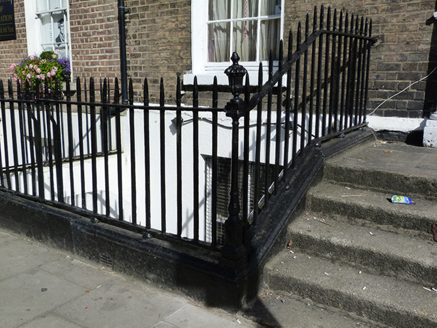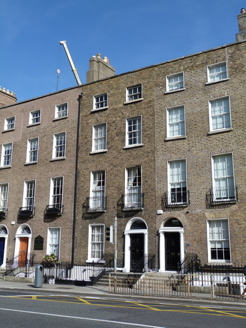Survey Data
Reg No
50930296
Rating
Regional
Categories of Special Interest
Architectural, Artistic
Original Use
House
In Use As
House
Date
1780 - 1820
Coordinates
316282, 232994
Date Recorded
29/09/2015
Date Updated
--/--/--
Description
Terraced two-bay four-storey over basement townhouse, built c. 1800. L-plan pitched roof, with front (south) ridge running parallel to street and hipped to south-east corner, hidden behind refaced brick parapet with granite coping. Rendered chimneystacks with largely replacement yellow clay pots to west party wall, parapet gutters and uPVC rainwater goods breaking through to west end. Brown brick walls laid in Flemish bond over rendered walls to basement. Square-headed window openings with masonry sills, brick voussoirs and patent reveals. Largely original six-over-six pane timber sliding sash windows, three-over-three replacements to third floor and two-over-two to basement with convex horns. Decorative iron balconettes with Greek fret pattern to first floor. Round-headed door opening with brick voussoirs, rendered reveals and Tuscan columns supporting plain frieze and simplified cornice, having plain fanlight with coved surround and replacement timber-panelled door. Granite entrance platform with granite steps flanked by iron railings with decorative cast-iron corner posts on masonry plinth, continuing to west to enclose basement area.
Appraisal
This fine Georgian townhouse displays well-balanced proportions with a restrained use of detailing, ornamented by a Tuscan doorcase and iron work balconettes and railings. It makes a positive contribution to the streetscape and to the wider historic Georgian core of south Dublin. Leeson Street forms part of an ancient routeway, Suesey Street, leading from the city to Donnybrook. Located within the Fitzwilliam Estate, which covered much of the south-east of the city, the street was named after Joseph Leeson, 1st Earl of Milltown. Plots were leased for development in the mid-eighteenth century but, apart from the north-western end, it remained undeveloped until the 1780s. Most development was completed by 1836.
